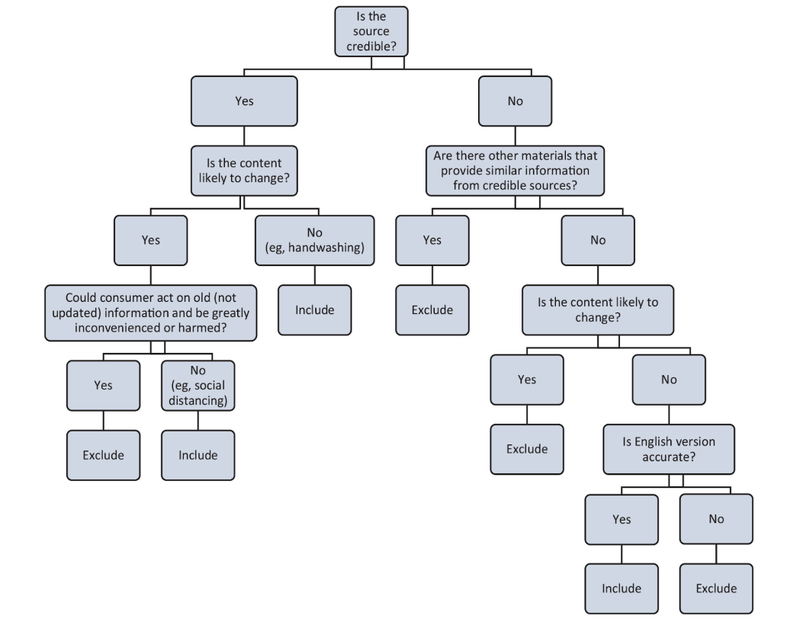Submission Guidelines
Thank you for you interest in submitting content to Resource Central database project. Please review the guidelines below before submitting content to Resource Central.
Is the resource already in Resource Central?
Visit Resource Central and type the name of the website or the title of the article, video, or resource in the search bar. If you see the resource appear in the search results list, we have already reviewed it and added it to our collection. If it does not appear in the search results, consider the following guidance to determine if the resource is trustworthy and useful to be shared on Resource Central.
Is the resource directly related to addressing the needs of children in disaster and day-to-day emergencies?
Is the content classified in one of the following areas?:
- Everyday emergencies
- Disasters
- Pandemics
- Emergency care
- Emergency management education
Is the resource trustworthy?
Who runs the site? Can you trust them to provide balanced, accurate information? Trustworthy sites provide a way to contact the owners with questions or feedback.
In general, you'll find good information on websites run by:
- Federal government agencies.
- Medical schools.
- Large professional or nonprofit organizations. For example, the American College of Cardiology (a professional organization) and the American Heart Association (a nonprofit) are both reliable sources of information on heart health.
What's the purpose of the site? Is it to:
- Inform the public?
- Sell products or services?
- Promote the opinions of a person or group?
- A trustworthy website has one goal: To give you good information.
Who pays for the site?
- If the site is funded by ads, they should be clearly marked as advertisements. Watch out for ads designed to look like neutral information.
- If a business pays for the site, the information may favor that business and its products.
Is the information high quality? Good information gives you balanced facts based on research. To evaluate the quality of a website's information, ask:
How is the information selected and reviewed to make sure it's accurate?
Check the "About Us" page to see if the site has:
- An editorial board of subject matter experts
- A content review process
- A selection policy for content
- Information about their writers' qualifications, which may be listed at the bottom of the articles
Where does the information come from? The content pages should have links or references to the sources of the information.
Is the information up to date? Content pages should include dates when the information was written, reviewed, or updated.
Does the site present facts and not opinion?
- Information should be presented in a clear manner. It should be factual (not opinion) and capable of being verified from a primary information source such as the professional literature, abstracts, or links to other websites.
- Information represented as an opinion should be clearly stated and the source should be identified as a qualified professional or organization.
How does the website use personal information? Look for a privacy policy section to see how personal information will be used. We want to direct users to safe, secure sites.
How often is the site updated? The site should be updated frequently. Disaster/ Health information changes constantly as new information is learned about events, diseases, and treatments through research and patient care. Websites should reflect the most up-to-date information. The website should be consistently available, with the date of the latest revision clearly posted. Revision dates often appear at the top or bottom of the page.
- Will the resource be useful, for example, in 3 months or 1 year? Or is it a snapshot in time that will be updated regularly? Eg. a report about outbreak numbers at a certain point in time may be less useful than the site that produces those statistics where they will be updated frequently for reference.
Who is the information intended for?
- The website should clearly state whether the information is intended for the general public or for doctors, nurses, or other health professionals.
- Many health information websites have two different areas – one for the public and one for professionals. The design of the site should make selection of one area over the other clear to the user.

Figure 1. Decision tree for reviewing COVID-19 educational materials for populations that were limited English proficient, United States, 2020. The decision tree was used to gather credible and reliable informational materials mostly from government, academic, established nonprofit, and professional organizations, including the Centers for Disease Control and Prevention, the World Health Organization, the Los Angeles County Department of Public Health, California’s Vaccinate All 58 Campaign, The California Endowment, and other state and county departments of public health. (Shea, 2024)
Formats
Resource Central contains a variety of web-based content. This includes, but not limited to, websites, various document formats, infographics, podcasts, videos, courses, toolkits, journal articles, job aids, exercises, and simulations.
- Is there a specific page of a website that is useful or is the entire site? We can highlight specific portions of a page to draw attention to it without creating multiple records.
- For example, a website includes a summary, link to a report, and a link to a tip sheet. We only need the link to the website. If there is something particular about a tip sheet that should be noted in the description, please let us know.
Languages
Resource Central supports multiple languages. If you are sharing a website that has the option for different languages then the eResource librarians will add them automatically as we review the page.
References
https://medlineplus.gov/evaluatinghealthinformation.html
https://www.mlanet.org/resources/information-for-patients-and-caregivers/
Shea S, Nguyen T, Kim DH, Gee GC, Wang MC, Umemoto K. Lessons Learned From TranslateCovid, a Multilingual Online Resource Hub for Asian American and Pacific Islander Communities and Beyond. Public Health Rep. 2024 Nov-Dec;139(6):647-653. doi: 10.1177/00333549241236092. Epub 2024 Apr 8. PMID: 38584484; PMCID: PMC11528835.